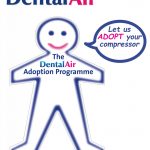 The average Briton gets a little over six and a half hours of sleep a night, with 70% of the population getting less than 7 hours.[1]Poor quality sleep is associated with negative physical and mental health effects, with the relationship between the two likely bidirectional. Notably, poor sleep is a risk factor for depression and metabolic disorders, including diabetes – conditions that can increase the risk of oral and general health complications.[2], [3], [4], [5], [6]
The average Briton gets a little over six and a half hours of sleep a night, with 70% of the population getting less than 7 hours.[1]Poor quality sleep is associated with negative physical and mental health effects, with the relationship between the two likely bidirectional. Notably, poor sleep is a risk factor for depression and metabolic disorders, including diabetes – conditions that can increase the risk of oral and general health complications.[2], [3], [4], [5], [6]
Sleep disturbances may increase during the winter months as the days shorten and the end of British Summer Time jolts the clock back. With minimal exposure to the sun’s rays, Britons get less vitamin D and their circadian rhythms may become disrupted by the reduction in natural light, combined with increased artificial/blue light exposure.[7]Vitamin D is required for our bodies to absorb calcium – when depleted, our teeth and bones can become calcium deficient, which weakens their natural growth and repair, increasing the likelihood of caries.[8]Research also indicates that vitamin D accelerates the osseointegration process around titanium dental implants.[9]
In Britain, most of the population’s vitamin D needs are met by skin synthesis, which is dependent on sunlight exposure. During summer, around 8.4% of white Britons (aged 19-64) have vitamin D deficiency, climbing to almost 40% in the winter when sunlight in the UK is generally too weak to trigger vitamin D synthesis. As the body continuously uses vitamin D, Britons are dependent on reserves created during the summer. Research indicates that between 9-13 minutes of sun exposure (provided around a third of skin is exposed) around lunchtime from March to September, is sufficient for a white-skinned person in the UK to gain their required vitamin D for the year. UV-B radiation is blocked by those with darker skin or skin that is not exposed due to clothing, which reduces vitamin D production and requires proportionately more time in the sun. Where sun exposure is impractical, vitamin supplementation may be appropriate.[10]
Coffee
Many Britons trudge through the winter months fuelled by caffeine, especially from coffee. The chemical complexity of coffee can imbue the drink with numerous bioactive properties, and potentially give rise to what seem to be contradictory properties.
Most dietary caffeine comes from coffee – with the average cup containing 90mg – but this can vary tremendously from around 50mg to 475mg (not including decaf products). Other dietary sources of caffeine include tea, energy drinks, soft drinks, and chocolate.[11],[12]The EFSA considers habitual caffeine consumption up to 400mg to be safe for the average adult (half that for pregnant and breastfeeding women).[13]However, while caffeine consumption is generally safe, it can impact sleep quality and lead to sleep deprivation for some, though certainly not all drinkers.[14]
Coffee has several properties that may be interesting to dental practitioners. For instance, coffee works against the cariogenic bacteria Streptococcus Mutans. This is in part because coffee contains chemical components that inhibit bacterial adhesion to the teeth. Instant, ground and decaffeinated coffee all appear to share this property.[15]
For patients receiving dental implants, the effect of coffee consumption is currently unclear. Strong caffeinated drinks such as black coffee can potentially result in a loss of calcium during urination. However, long-term caffeine consumption appears to elevate intestinal absorption of calcium, enabling the body to retain a normal calcium balance.[16]Adding milk to coffee or tea naturally increases calcium intake too.
Caffeine may also inhibit the vitamin D receptor on osteoblast cells, but this effect appears to be temporary.[17],[18]Other research indicates that antioxidants in coffee reduce oxidative stress in osteoblasts, thereby increasing differentiation and stability.[19]At present, the extent to which caffeine and coffee consumption is a threat to alveolar bone repair is controversial and inconclusive.[20]
Among hot beverages, coffee is particularly corrosive.[21]This can weaken tooth enamel, potentially leading to tooth loss and subsequent treatment with dental implants. Ideally, practitioners should choose a top-quality implant solution that offers the best functional and aesthetic advantages to ensure a highly satisfactory outcome. 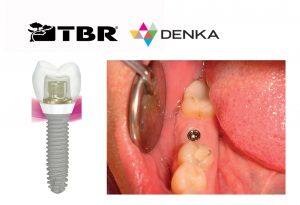 The innovative Z1®implant system from TBR features a highly resilient titanium body and an intelligently designed zirconia collar that helps protect the crestal bone and gingiva from iatrogenic inflammation. Protecting the bone-implant interface from infection is critical to osseointegration and the long-term success of an implant.[22]
The innovative Z1®implant system from TBR features a highly resilient titanium body and an intelligently designed zirconia collar that helps protect the crestal bone and gingiva from iatrogenic inflammation. Protecting the bone-implant interface from infection is critical to osseointegration and the long-term success of an implant.[22]
Britain’s cold winter months can exacerbate difficulties brought on by modern lifestyles and work patterns. Not getting enough sunlight can not only leave people vitamin D deficient, but also contribute to poor sleep. These deficiencies can result in general and oral health problems. Some patients may rely on caffeine to offset tiredness, which could also have detrimental oral effects. Patients should be made aware of how broadly beneficial getting enough sun and sleep can be for their overall health.
For more information on the Z1®implant, visit tbr.dental, email support@denkauk.com or call 0800 707 6212
References
[1]The Sleep Council. The great British bedtime report. The Sleep Council. 2013. https://www.sleepcouncil.org.uk/wp-content/uploads/2013/02/The-Great-British-Bedtime-Report.pdfOctober 11, 2019.
[2]Khandelwal D., Dutta D., Chittawar S., Kalra S. Sleep disorders in type 2 diabetes. Indian Journal of Endocrinology and Metabolism. 2017; 21(5): 758- 761. https://www.ncbi.nlm.nih.gov/pmc/articles/PMC5628550/October 11, 2019.
[3]Gadie A., Shafto M., Leng Y., Kievit R. How are age-related differences in sleep quality associated with health outcomes? An epidemiological investigation in a UK cohort of 2406 adults. BMJ Open. 2017; 7(7): e014920. https://bmjopen.bmj.com/content/7/7/e014920October 11, 2019.
[4]Mauri-Obradors E., Estrugo-Devesa A., Jané-Salas E., Viñas M., López-López J. Oral manifestations of diabetes mellitus. A systematic review. Medicina Oral, Patología Oral y Cirugía Bucal. 2017; 22(5): e586-594. https://www.ncbi.nlm.nih.gov/pmc/articles/PMC5694181October 11, 2019.
[5]D’Aiuto F., Gable D., Syed Z., Allen Y., Wanyonyi K., White S., Gallagher J. Evidence summary: the relationship between oral diseases and diabetes. British Dental Journal. 2017; 222: 944-948. https://www.nature.com/articles/sj.bdj.2017.544October 11, 2019.
[6]Cademartori M., Gastal M., Nascimento G., Demarco F., Corrêa M. Is depression associated with oral health outcomes in adults and elders? A systematic review and meta-analysis. Clinical Oral Investigations.2018; 22(8): 2685-2702. https://doi.org/10.1007/s00784-018-2611-yOctober 11, 2019.
[7]LeGates T., Fenandez D., Hattar S. Light as a central modulator of circadian rhythms, sleep and affect. Nature Reviews Neuroscience. 2014; 15(7): 443-454. https://www.ncbi.nlm.nih.gov/pmc/articles/PMC4254760/October 11, 2019.
[8]Gyll J., Ridell K., Öhlund I., Åkeson P., Johansson I., Holgerson P. Vitamin d status and dental caries in health Swedish children.Nutrition Journal. 2018; 17: 11. https://www.ncbi.nlm.nih.gov/pmc/articles/PMC5771062/October 3, 2019.
[9]Gaber M., Saleh M., Fahmy M., Elba G. Evaluation of the effect of cholecalciferol on titanium implant osseointegration (an experimental study). Alexandria Dental Journal.2015; 40: 33-39. http://adj.alexu.edu.eg/index.php/adj/article/view/14/9October 11, 2019.
[10]Webb A., Kazantzidis A., Kift R., Farrar M., Wilkinson J., Rhodes L. Meeting vitamin d requirements in white Caucasians at UK latitudes: providing a choice. Nutrients.10(4): 497. https://www.ncbi.nlm.nih.gov/pmc/articles/PMC5946282/October 11, 2019.
[11]EFSA. EFSA explains risk assessment: caffeine. European Food Safety Authority.2015. http://www.efsa.europa.eu/en/corporate/pub/efsaexplainscaffeine150527.htmOctober 11, 2019.
[12]CSPI. Caffeine chart. Center for Science in the Public Interest. 2019. https://cspinet.org/eating-healthy/ingredients-of-concern/caffeine-chartOctober 11, 2019.
[13]European Food Safety Authority. Scientific opinion on the safety of caffeine. EFSA Journal.2015; 13(5): 4102. https://efsa.onlinelibrary.wiley.com/doi/pdf/10.2903/j.efsa.2015.4102October 11, 2019.
[14]O’Callaghan F., Muurlink O., Reid N. Effects of caffeine on sleep quality and daytime functioning. Risk Management and Healthcare Policy. 2018; 11: 263-271. https://www.ncbi.nlm.nih.gov/pmc/articles/PMC6292246/October 11, 2019.
[15]Namboodiripad A., Kori S. Can coffee prevent caries? Journal of Conservative Dentistry. 2009; 12(1): 17-21. https://www.ncbi.nlm.nih.gov/pmc/articles/PMC2848806/October 3, 2019
[16]Yi J., Zhang L., Yan B., Yang L., Li Y., Zhao Z. Drinking coffee may help accelerate orthodontic tooth movement. Dental Hypotheses.2012; 3(2): 72-75. http://www.dentalhypotheses.com/text.asp?2012/3/2/72/100391October 11, 2019.
[17]Yi J., Zhang L., Yan B., Yang L., Li Y., Zhao Z. Drinking coffee may help accelerate orthodontic tooth movement. Dental Hypotheses.2012; 3(2): 72-75. http://www.dentalhypotheses.com/text.asp?2012/3/2/72/100391October 11, 2019.
[18]Duarte P., Marques M., Bezerra J., Bastos M. The effects of caffeine administration on the early stage of bone healing and bone density. A histometric study in rats. Archives of Oral Biology. 2009; 54: 717-722. http://dx.doi.org/10.1016/j.archoralbio.2009.05.001October 11, 2019.
[19]Herniyati H. The increased number of osteoblasts and capillaries in orthodontic tooth movement post-administration of robusta coffee extract. Dental Journal (Majalah Kedokteran Gigi). 2017; 50(2): 91-96. http://dx.doi.org/10.20473/j.djmkg.v50.i2.p91-96October 11, 2019.
[20]Lacerda S., Matuoka R., Macedo R., Petenusci S., Campos A., Brentegani L. Bone quality associated with daily intake of coffee: a biochemical, radiographic and histometric study. Brazilian Dental Journal. 2010; 21(3): 199-204.
[21]Jameel R., Khan S., Rahim Z., Bakri M., Siddiqui S. Analysis of dental erosion induced by different beverages and validity of equipment for identifying early dental erosion, in vitro study. Journal of the Pakistan Medical Association. 2016; 66(7): 843-848. https://www.researchgate.net/publication/304076631_Analysis_of_dental_erosion_induced_by_different_beverages_and_validity_of_equipment_for_identifying_early_dental_erosion_in_vitro_studyOctober 11, 2019.
[22]Wang Y., Zhang Y., Miron R. Health, maintenance, and recovery of soft tissues around implants. Clinical Implant Dentistry and Related Research. 2015; 18(3): 618-634. https://onlinelibrary.wiley.com/doi/abs/10.1111/cid.12343October 3, 2019.






 A sponsored dry spell away from chocolate is a great thing to do and you can get all of your colleagues and patients involved. Why not hold a competition to see who can raise the most money through sponsorship? Furthermore, you can use this month as an opportunity to discuss the dangers of heart disease and the effects that chocolate can have on oral health with your patients as well. Obviously, you don’t want to be a downer (Valentine’s Day is meant to be something to look forward to!) but you can encourage patients to join in – February is just a short month and there are plenty of chocolate free ways to celebrate the holiday. Why not suggest people do a physical activity or go to a spa day together? It’s easy to live a healthier lifestyle for one month and raise awareness and funds for a very good cause.
A sponsored dry spell away from chocolate is a great thing to do and you can get all of your colleagues and patients involved. Why not hold a competition to see who can raise the most money through sponsorship? Furthermore, you can use this month as an opportunity to discuss the dangers of heart disease and the effects that chocolate can have on oral health with your patients as well. Obviously, you don’t want to be a downer (Valentine’s Day is meant to be something to look forward to!) but you can encourage patients to join in – February is just a short month and there are plenty of chocolate free ways to celebrate the holiday. Why not suggest people do a physical activity or go to a spa day together? It’s easy to live a healthier lifestyle for one month and raise awareness and funds for a very good cause.
 The average Briton gets a little over six and a half hours of sleep a night, with 70% of the population getting less than 7 hours.
The average Briton gets a little over six and a half hours of sleep a night, with 70% of the population getting less than 7 hours. The innovative Z1®implant system from TBR features a highly resilient titanium body and an intelligently designed zirconia collar that helps protect the crestal bone and gingiva from iatrogenic inflammation. Protecting the bone-implant interface from infection is critical to osseointegration and the long-term success of an implant.
The innovative Z1®implant system from TBR features a highly resilient titanium body and an intelligently designed zirconia collar that helps protect the crestal bone and gingiva from iatrogenic inflammation. Protecting the bone-implant interface from infection is critical to osseointegration and the long-term success of an implant.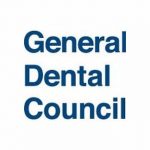


 Britons spend a huge amount of time and money maintaining, decorating and filling their homes with possessions. People are spending more time at home, and consequently spending more on household possessions and upkeep, resulting in the homes and gardens sector becoming the fastest growing area of consumer spending last year (rising 12%).
Britons spend a huge amount of time and money maintaining, decorating and filling their homes with possessions. People are spending more time at home, and consequently spending more on household possessions and upkeep, resulting in the homes and gardens sector becoming the fastest growing area of consumer spending last year (rising 12%).
 Most people have winced after a short, sharp twinge from a sensitive tooth. It often comes unexpectedly and pain originating in the oral cavity is perceived as disproportionately large compared to the rest of the body.2Tooth sensitivity is a common, bothersome dental problem, which may restrict what an individual chooses to consume and impact on their quality of life.
Most people have winced after a short, sharp twinge from a sensitive tooth. It often comes unexpectedly and pain originating in the oral cavity is perceived as disproportionately large compared to the rest of the body.2Tooth sensitivity is a common, bothersome dental problem, which may restrict what an individual chooses to consume and impact on their quality of life.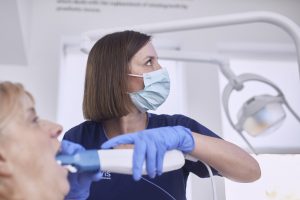 Preventing the loss of enamel and/or cementum is the key to averting tooth sensitivity. Dental professionals can offer dietary advice and oral health instruction to help patients to protect their teeth. Fluoride treatments and sealants may also be helpful to remineralise the tooth surfaces. However, the CALCIVIS® imaging system provides dental professionals and their patients with an effective early warning system. This technology visualises active demineralisation on the surfaces of the teeth in real time, at the chair side. Using bioluminescence, the CALCIVIS imaging system detects the loss of minerals from the hard tissues of the teeth at the earliest, most reversible stages. Furthermore, the engaging CALCIVIS images help patients to understand their oral health status and comply with measures to remineralise the teeth before the sensitive dentine is exposed.
Preventing the loss of enamel and/or cementum is the key to averting tooth sensitivity. Dental professionals can offer dietary advice and oral health instruction to help patients to protect their teeth. Fluoride treatments and sealants may also be helpful to remineralise the tooth surfaces. However, the CALCIVIS® imaging system provides dental professionals and their patients with an effective early warning system. This technology visualises active demineralisation on the surfaces of the teeth in real time, at the chair side. Using bioluminescence, the CALCIVIS imaging system detects the loss of minerals from the hard tissues of the teeth at the earliest, most reversible stages. Furthermore, the engaging CALCIVIS images help patients to understand their oral health status and comply with measures to remineralise the teeth before the sensitive dentine is exposed.
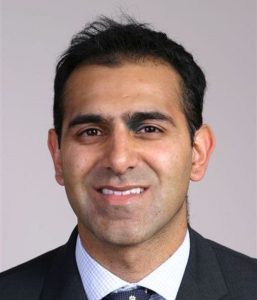 The British Orthodontic Society (BOS) found that orthodontic treatment remained popular among UK adults in 2019.
The British Orthodontic Society (BOS) found that orthodontic treatment remained popular among UK adults in 2019.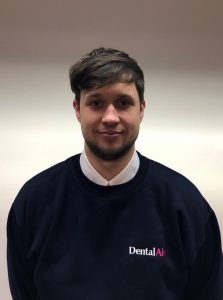 In a modern dental practice, there are multiple pieces of technology to consider. After all, imaging systems, autoclaves and other tech are all essential in order to provide the best level of care.
In a modern dental practice, there are multiple pieces of technology to consider. After all, imaging systems, autoclaves and other tech are all essential in order to provide the best level of care. The AirCare Adoption Programme from DentalAir is a highly affordable choice regardless of the size of your practice. Depending on the make and model of your existing compressor, you can benefit from complete care and cover from as little as £9.50 per week!
The AirCare Adoption Programme from DentalAir is a highly affordable choice regardless of the size of your practice. Depending on the make and model of your existing compressor, you can benefit from complete care and cover from as little as £9.50 per week!